| Tettenhall Road,
Newbridge, and Old
Hill The journey from Wolverhampton to Upper Green
in Tettenhall has changed considerably since the early
nineteenth century. In those days, Tettenhall Road went as
far as Newbridge, then ran behind where the shops are today,
and crossed the canal over the old bridge, followed by the
bridge over Smestow brook. The road then followed what is
now Meadow View, after which traffic turned right into
Henwood Road, before turning left into Old Hill, and through
Upper Street to Upper Green. The route had many difficulties
for the horse-drawn vehicles of the day. At Newbridge the
road dropped down to cross the two bridges, before rising
into Old Hill, and the extremely steep climb up the ridge to
Tettenhall village, with its 1 in 5 gradient, which must
have been treacherous in snow and ice.
|
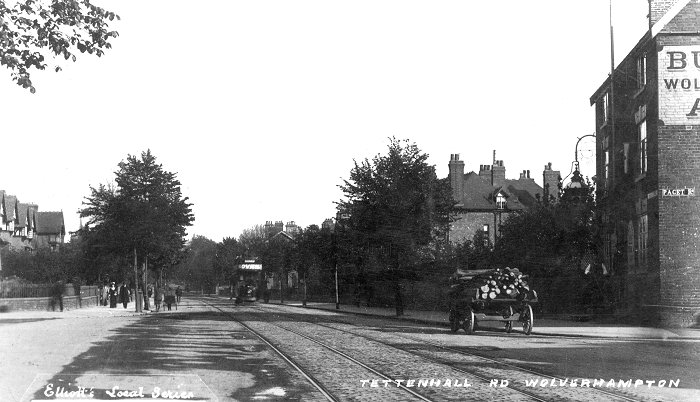
Tettenhall Road at its junction with Paget
Road and Albert Road. On the right is the Halfway House.
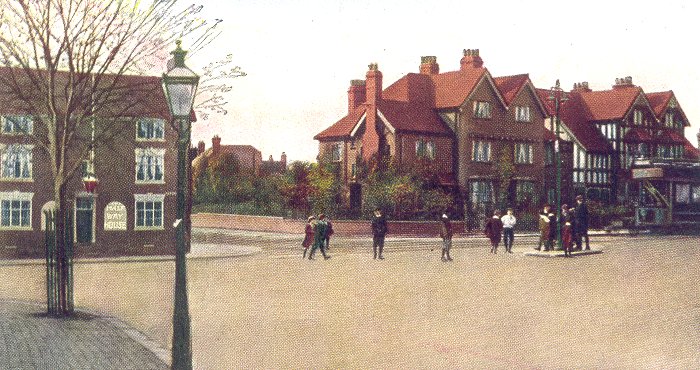
A view of the same junction looking towards
Paget Road, with Halfway House on the left.
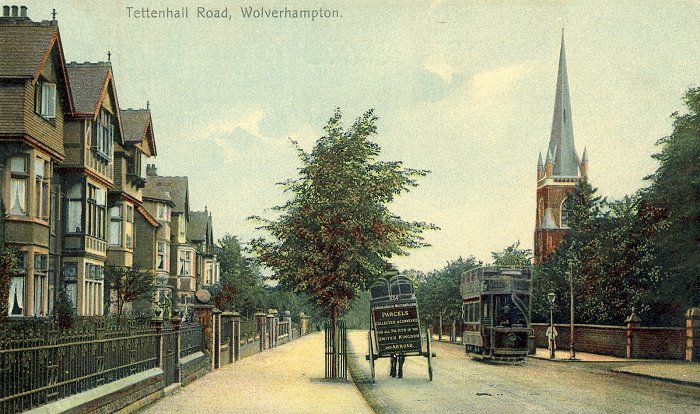
Approaching St. Jude's Church, on the way to
Tettenhall from Wolverhampton.
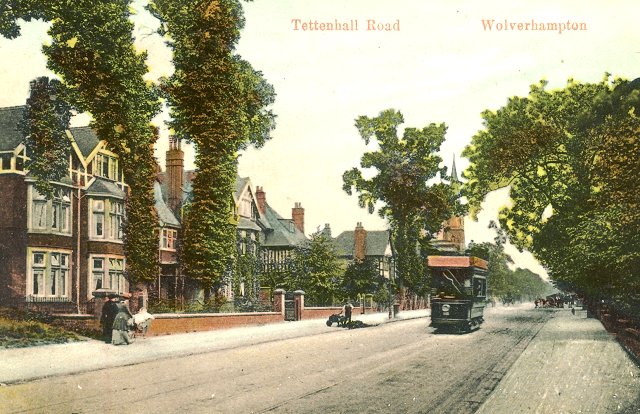
Another view of the Tettenhall
Road looking back to St. Jude's Church. The tram is on
its way to Upper Green. |
|
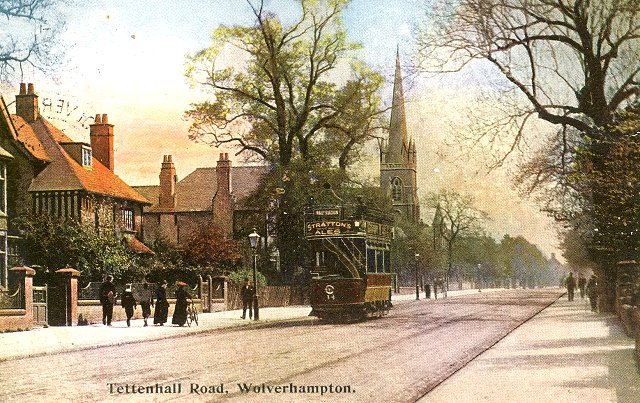
A similar view, but with a tram
travelling to Wolverhampton. |
|

Another view of the Tettenhall
Road, with Balfour Crescent on the left. |
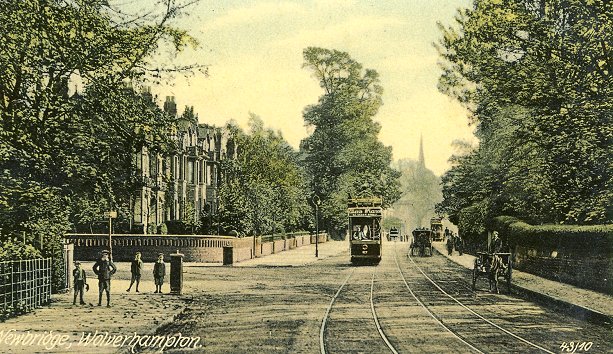
A tram making its way to
Wolverhampton along Tettenhall Road, after passing New
Hampton Road on the left. |
|

An enlarged view of the image
above. |
|

Tettenhall Road, looking towards
Tettenhall, with Newbridge Crescent on the left and
Balfour Crescent on the right. |
| Great improvements were made to the route from
Wolverhampton to Tettenhall thanks to the Act of Union
between England and Ireland, passed in 1801. Due to the
Act, the amount of traffic between Dublin and Holyhead
increased dramatically, including the one hundred Irish MPs
who had the right to attend the Parliament at Westminster.
The route from Holyhead to London was tortuous, with many
bad roads and long delays, which led to frequent complaints
about the appalling state of the road, and the long journey
time. A parliamentary committee set up to organise the
necessary improvements for the Holyhead Road, appointed
Thomas Telford as the consulting engineer. He began by
organising the route from Holyhead to Shrewsbury, including
the building of the Menai Suspension Bridge. Work on this
part of the road began in 1815 and took five years to
complete. In 1820 work began on the remaining part of the
route, which was completed in 1828. The work on the road was
undertaken by 24 independent turnpike trusts. When Telford examined
the section between Tettenhall and Wolverhampton he decided
to completely avoid the Tettenhall ridge by diverting the
road through Aldersley to the Wergs. The
chairman of the Wolverhampton turnpike trust rejected Telford's plan
because the Aldersley area was waterlogged, and wouldn't
provide a proper surface for the road. Telford responded by
suggesting that a tunnel should be built through the ridge
to Upper Green, but this was also rejected by the
Wolverhampton turnpike trust, who finally decided to blast
the cutting through The Rock, and build the new canal bridge,
and the embankment. After many difficulties, the work was
finally competed in 1823, so that for the first time
vehicles could easily pass between Newbridge and Upper
Green, avoiding the fearsome gradient at Old Hill. It had
been an expensive undertaking, which greatly increased the tolls that were payable on the road. Initially tolls
were collected at Chapel Ash, but this was abandoned in
favour of two gates, one at Newbridge, and another at
Compton. The new road, and the improved access to the upper
part of Tettenhall, allowed the village to greatly expand,
and made it an attractive place to live for the well to do. |
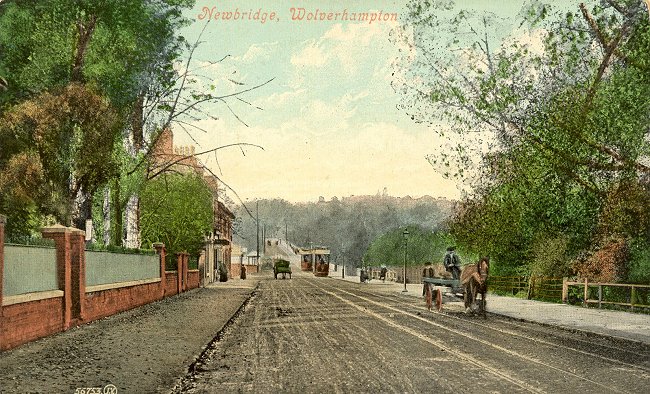
Looking towards Tettenhall and
the new canal bridge, and embankment, with the rock
cutting in the far distance. |
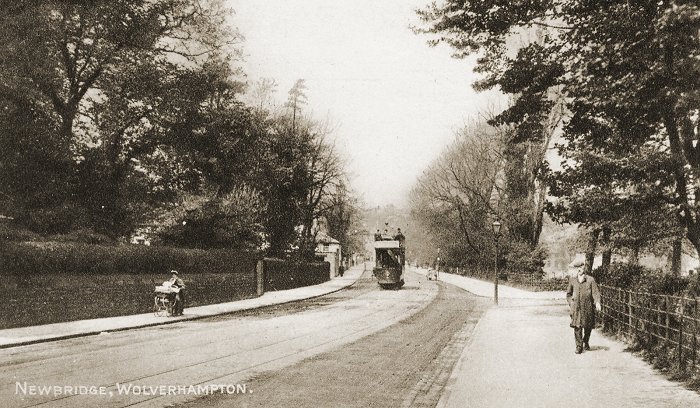
A tram on its way to
Tettenhall, passes Crowther Road some time after
1902. The tram is nearing the old boundary between
Wolverhampton and Tettenhall where the horse-drawn tram route terminated. Horse dawn trams
began running on 1st May, 1878, and operated until
1902 when they were replaced by the
electrically-powered Lorain trams, which were the
first trams to travel up The Rock to Wergs Road. |
|
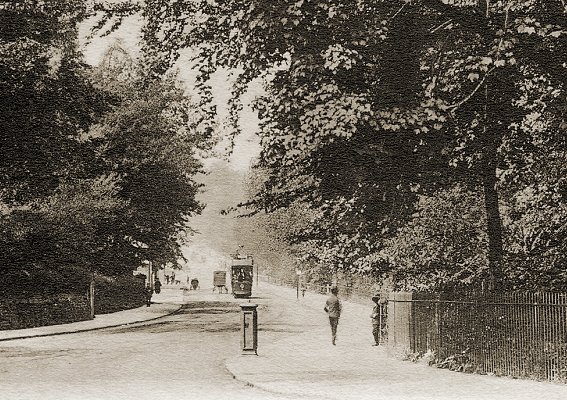
A similar view showing a tram
about to cross the canal before entering The Rock. |
|
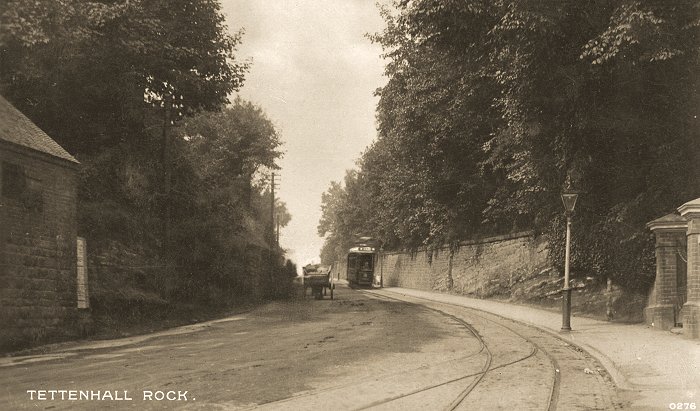
A tram descends The Rock on its
way to Wolverhampton. |
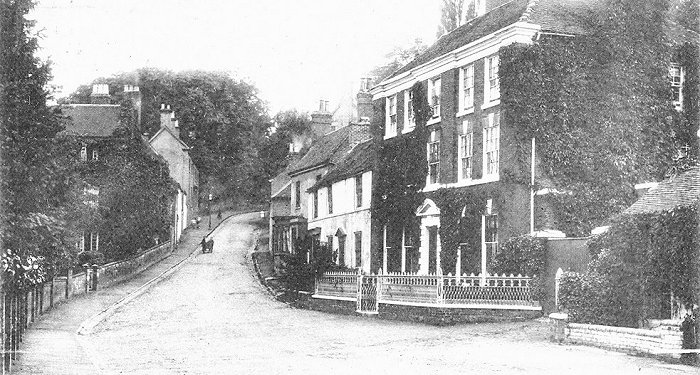
An early view of Old Hill showing
the steep gradient that once had to be ascended when
travelling from Newbridge to Upper Green. |
|
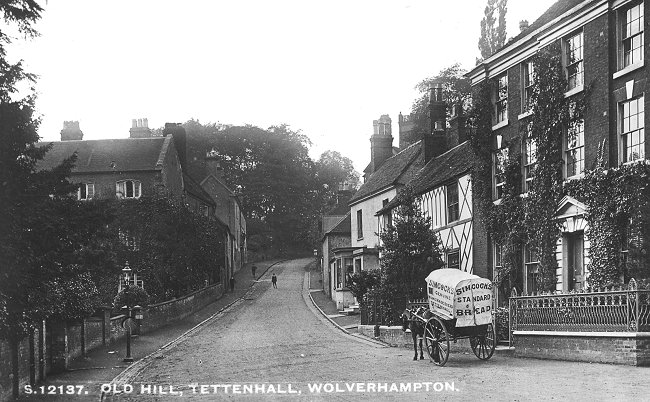
A view of Old Hill from the early
years of the twentieth century. |

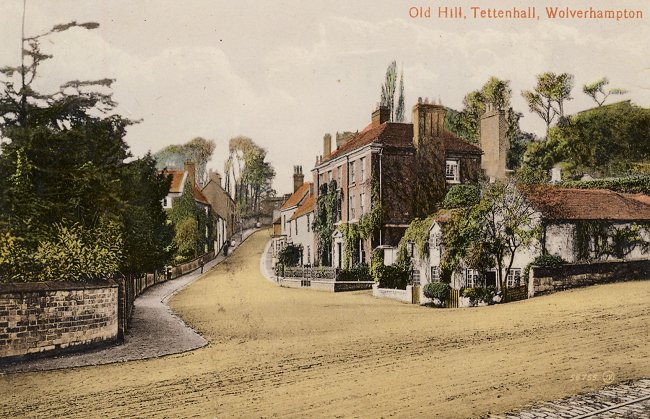
|
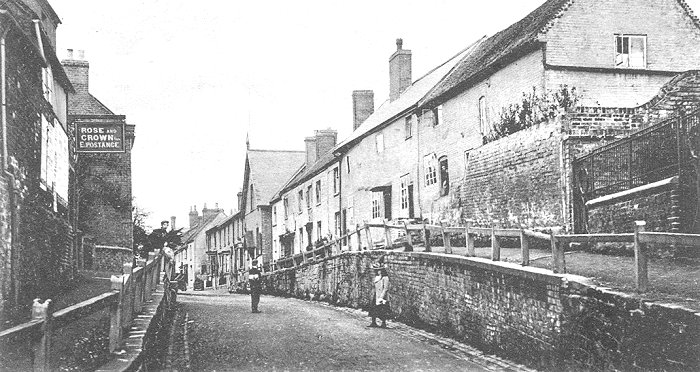
A wonderful view of Upper Street
looking towards the top of Old Hill. On the left is the
Rose and Crown Inn. |
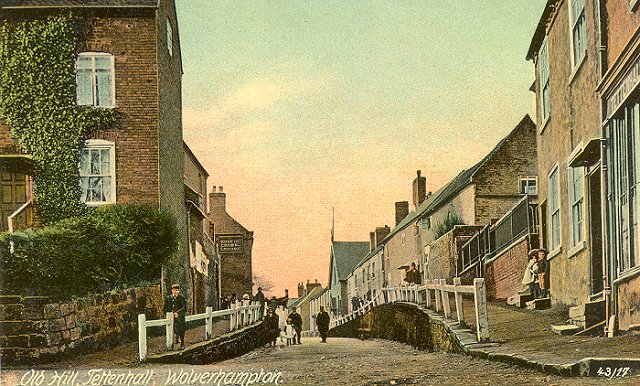
Another view of Upper Street
showing the raised pavements and railings, and the
terraced houses, which were demolished in the 1950s to
make way for the council flats. |
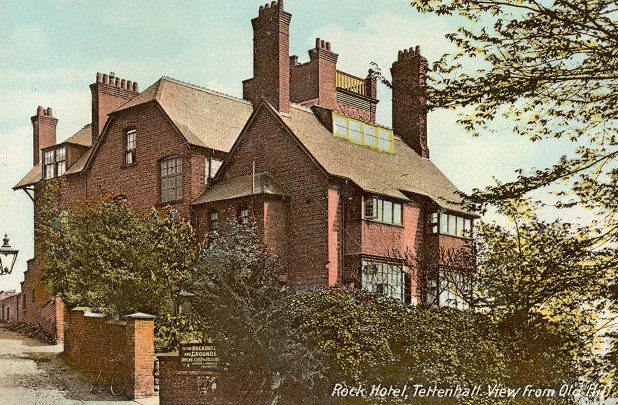
The Rose and Crown at the top of
Old Hill became the Rock Hotel in the final years of the
nineteenth century. By 1814 it was known as the Old Rose
and Crown. In 1843 its grounds were opened to the public
as Rock Villa Pleasure Gardens, complete with a bowling green, and
a bandstand. On public holidays there were firework
displays and balloon flights. |

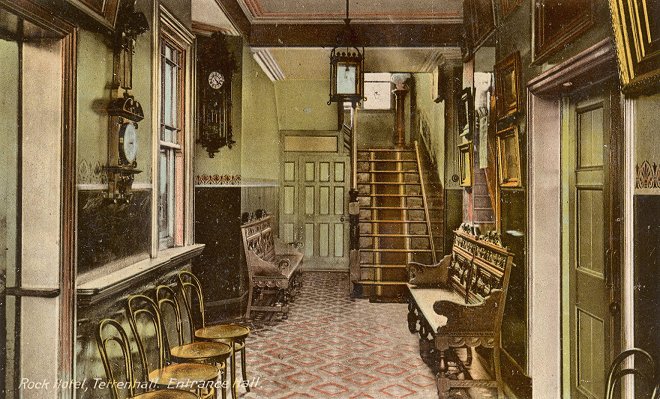
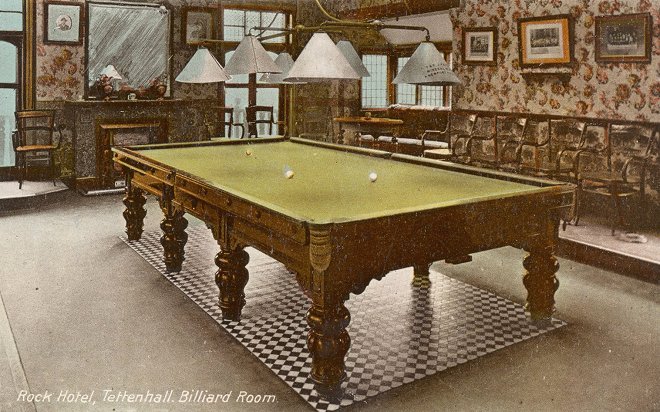
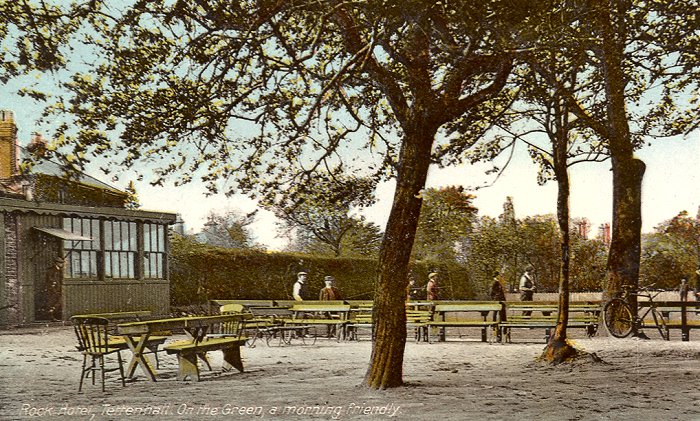
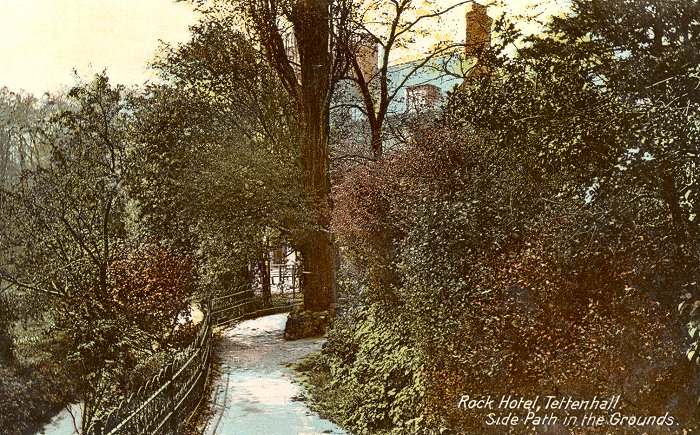
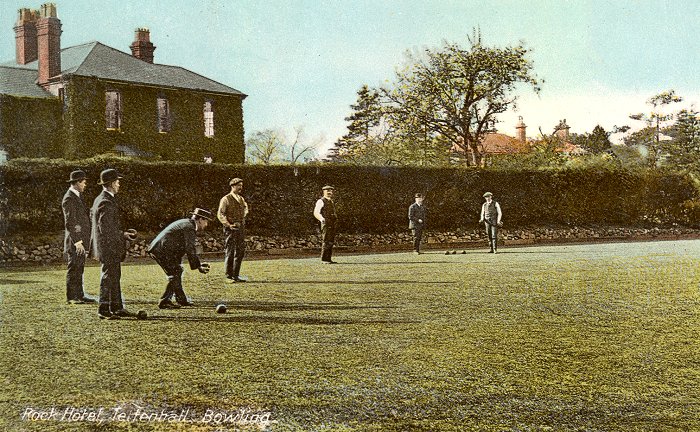
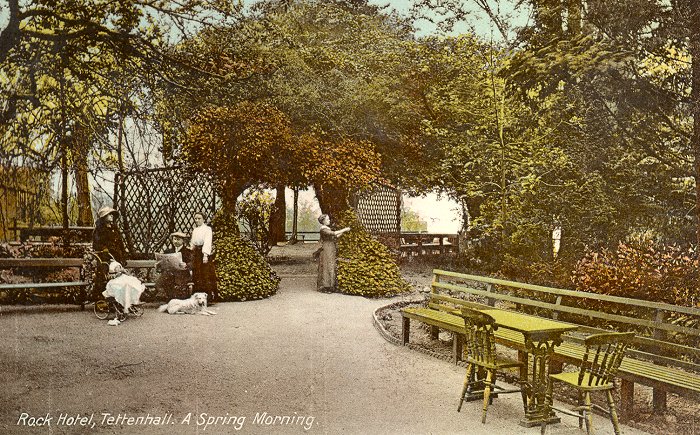

|

The view of Tettenhall village
from across the canal in the early years of the
twentieth century. |
|
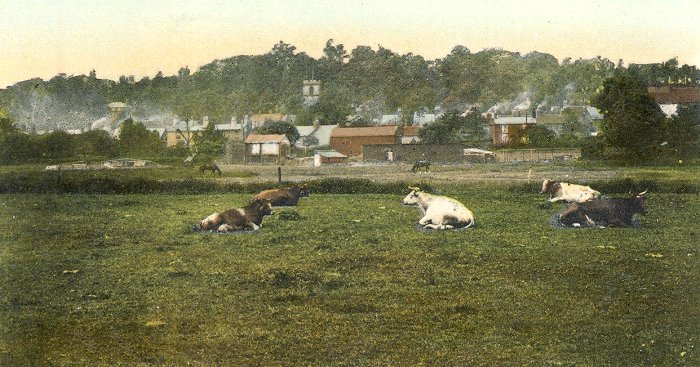
A similar view of Tettenhall
village from where the playing fields are today. |
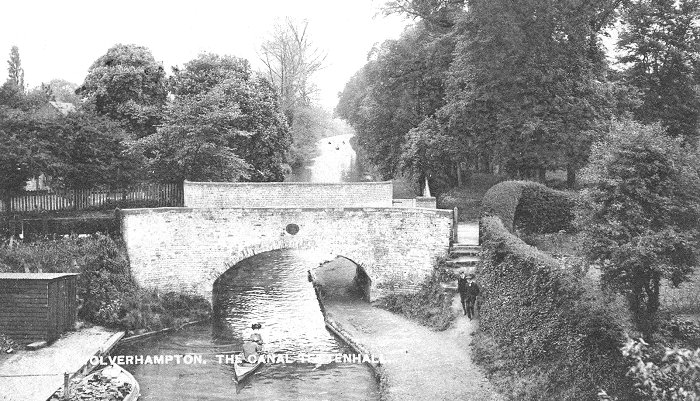
The view from the new canal bridge,
looking at the old canal bridge which carried the main road from
Wolverhampton to Tettenhall. The Staffordshire &
Worcestershire Canal was the first canal to be completed
in the area. It was surveyed by James Brindley, and
built to connect the River Severn at Stourport to the
Trent and Mersey Canal at Great Haywood. Work began at
Stourport in 1768 and progressed rapidly. It reached
Compton in November 1770, and was completed in May,
1772. |
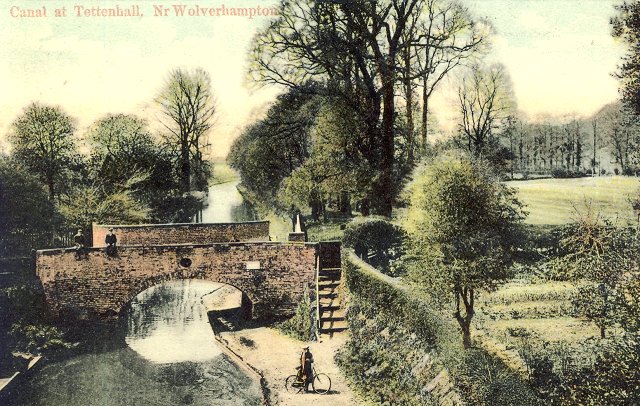
|

A view of the passenger motor
launch 'Victoria' which in the 1890s made regular
journeys from Newbridge wharf. |
|
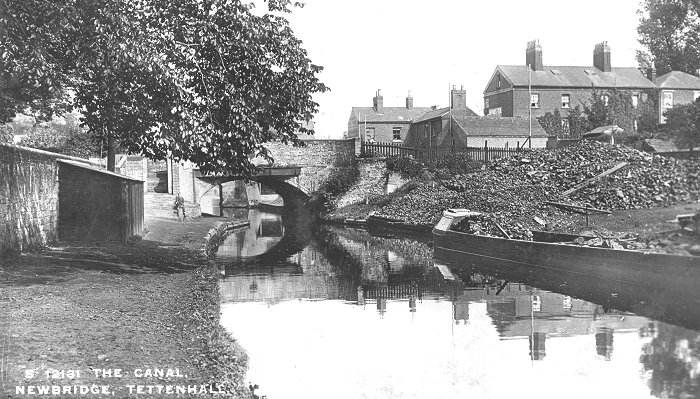
Charles F. Weaver's coal yard and
wharf beside the canal at Newbridge. |
|

Henwood Road and the mill race
that drove the local flour mill. |
|
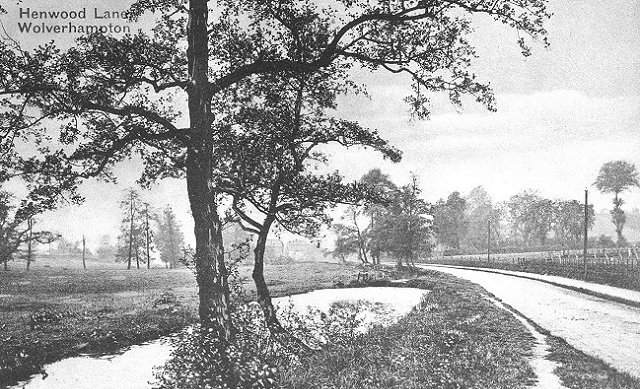
Part of Compton mill pool beside
Henwood Road. |
 |
|
 |
Return to
Tettenhall Church |
|
Return to
the contents |
|